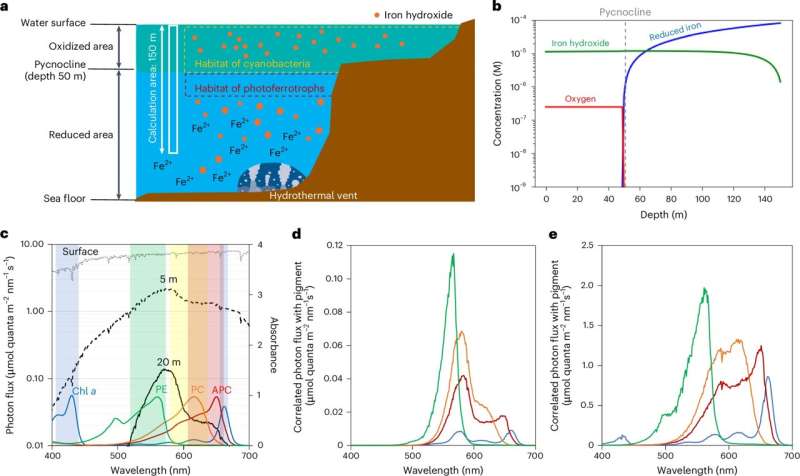February 24, 2025 report
This article has been reviewed according to Science X's editorial process and policies. Editors have highlighted the following attributes while ensuring the content's credibility:
fact-checked
peer-reviewed publication
trusted source
proofread
Simulation reveals ancient Earth had green oceans

A team of astrophysicists, geoscientists, chemists and life scientists affiliated with a host of institutions in Japan has found evidence that billions of years ago, the Earth's oceans were green. In their study published in the journal Nature Ecology & Evolution, the group used a variety of environmental factors to create a simulation of Earth several billion years ago.
Today, the world's oceans appear deep blue, contrasting with the light blue color of the sky. But this was not always the case, the researchers found. Billions of years ago, according to their simulation, the world's oceans were green.
For their study, the researchers added a host of environmental factors to their simulation, including the chemical makeup of the atmosphere and the oceans, with the specific goal of modeling the light spectrum. Billions of years ago, they note, the atmosphere had more vapor than today and carbon dioxide, which made it acidic, causing a relatively speedy erosion of the land. That led to massive amounts of iron being washed into the sea.
Then, depending on its ionic charge, it made the water appear brown, gray or green. Their simulation showed the iron was triple-charged, which meant it would have given the ocean water a green hue because iron hydroxide absorbs blue light and water absorbs red light—leaving green light to be reflected back into the atmosphere.
But that was only part of the story. They also note that at the same time, cyanobacteria in the water were using chlorophyll to convert sunlight into energy, and they had pigments that absorbed light that was not being absorbed by the green water, making the water even greener.
The research team suggest this period lasted from approximately 3 billion years ago to 600 million years ago. They also note that during this time, the world's oceans were larger, which would have made Earth look green from a distance.
Over the green-ocean period, the researchers note, the cyanobacteria in the sea would have been using energy from the sun to split water molecules into oxygen and hydrogen, releasing both gases into the atmosphere. Eventually, the oxygen would begin to dominate and react with the iron dissolved in the seawater, resulting in the ocean slowly turning blue.
More information: Taro Matsuo et al, Archaean green-light environments drove the evolution of cyanobacteria's light-harvesting system, Nature Ecology & Evolution (2025). DOI: 10.1038/s41559-025-02637-3
Journal information: Nature Ecology & Evolution
© 2025 Science X Network





















